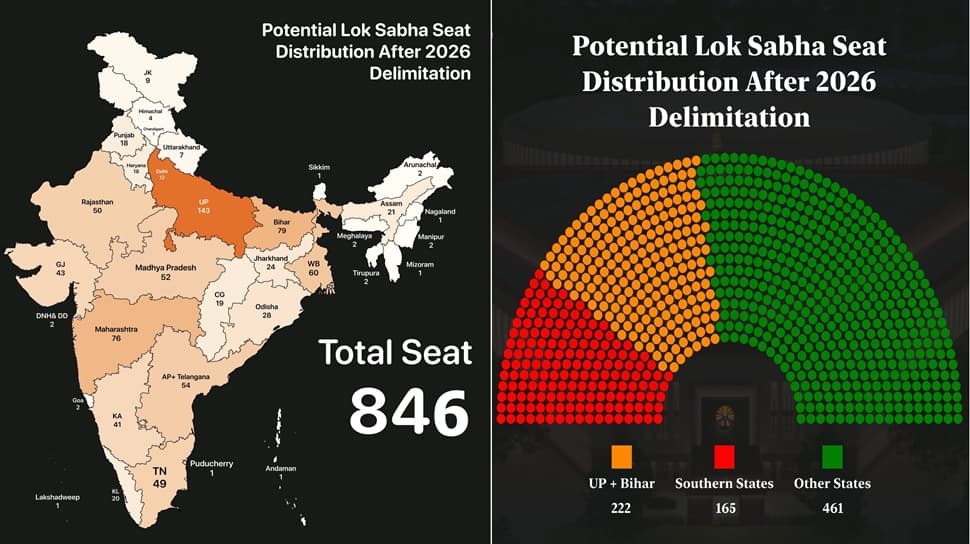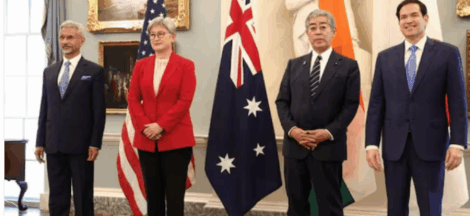By Dr. Gyan Pathak
Politics in South India, especially in Tamil Nadu, has become hotter on the issue of delimitation of constituencies in India, after the first Census to be completed after 2026. Census process in yet to be started, though it was to be started in early 2025, a process which takes about 18 months to be completed. Registrar General and Census Commissioner’s tenure was extended until August 2026, which was an indication that the Centre had planned the Census process to be completed by that time. Centre plans to complete the delimitation process by 2028 and the Lok Sabha General Election 2029 to be held as per new delimitation order. However, a new twist has come after the all-party meeting in Tamil Nadu on March 5, 2025, when Chief Minister M K Stalin demanded postponement of delimitation for the next 30 years.
Only a week before Union Minister of Home Amit Shah had assured in an event on February 26 in Tamil Nadu, “Today a meeting will be held to ensure the South does not suffer on account of delimitation. The public in Tamil Nadu is disturbed. This is why the Tamil Nadu CM (Stalin) and his son (Udhayanidhi) are trying to distract the public. Mr Stalin, the Modi government has made it clear in Lok Sabha that after delimitation, on pro rata basis, not a single seat will be reduced in any southern state. And I want to reassure the public of South India that Modiji has kept your interest in mind to make sure that not even one seat is reduced pro rata. And whatever increase is there, southern states will get a fair share, there is no reason to doubt this.”
Only a day earlier, CM Stalin has described the delimitation process as a “sword hanging over the head of South India.” He had warned that Tamil Nadu could lose up to eight of its 39 Lok Sabha constituencies due to the delimitations exercise, potentially reducing its seats to 31. He had called for all party meeting on the issues on March 5, 2025.
The outcome of the meeting held a week after Amit Shah’s assurance suggests that there were no takers of his assurance. Barring the BJP and its ally TMC, all the political parties of the state participated in the meeting. The meeting passed a resolution demanding that the freeze on the number of seats in Lok Sabha based on the 1971 Census should be extended for another 30 years. A joint committee of MPs from all parties in South India has also been proposed to draft a joint response to the issue.
CM Stalin said that Tamil Nadu and Southern states should not be punished for effectively implementing population control measures, adding, “Delimitation exercise solely based on population figures will be a gross injustice to Tamil Nadu and other Southern States. We are not against Delimitation exercise, but we want justice to be rendered to us.”
South Indian states have serious apprehension about the real intensions of PM Narendra Modi led BJP government suspecting them of trying to establish political hegemony of the BJP through increase of Lok Sabha seats from the Hindi belt states, chiefly Uttar Pradesh, Bihar, Madhya Pradesh and Rajasthan.
The basis of delimitation is yet to be worked out, but there are speculations on the basis of certain indication, such as the increase of seats in the new parliament building in New Delhi. The New Parliament building ahs 888 seats. Currently, we have altogether 543 MPs, which works out to be one MP representing about 10 lakh people. The delimitation was based on the 1971 population.
Population of the country has been something around 142 crore in 2025. The increase of seats in Parliament building is indicative of the government intention to increase the number of MPs. If we decide one MP for 20 lakh population there would be 707 seats. If we decide for one MP in 15 lakh population, total seats would be 942. As per the 2024 Lok Sabha election figures, each Lok Sabha Constituency had 17.84 lakh voters on projected population of 25.8 lakh.
During a parliamentary debate in September 2023, on Women’s Reservation Bill, the implementation of which was also linked to delimitation on the first Census after 2026, the issues of parliamentary seats was discussed, in which MPs for Southern states have raised the issue and expressed their concern of losing their representation in the parliament of India.
If one MP per 20 lakh population is adopted Tamil Nadu’s seats would remain the same at 39, while seats in Uttar Pradesh including Uttarakhand would increase from current 85 to 126 and Bihar including Jharkhand would increase for 54 to 85.
On projected population of 142 crore, Lok Sabha Constituencies are to rise to 848. In that case the number of seats in Uttar Pradesh would increase from 80 to 143, Bihar from 40 to 79, Rajasthan from 25 to 50 and Madhya Pradesh from 29 to 52.On the other hand, in the southern states – in Tamil Nadu it would increase from 39 to 49, Andhra and Telangana from 42 to 45, Karnataka from 28 to 41. As for Kerala is concerned its seat will remain at 20.
Southern states say that in that case the party who will win in Hindi belt states would be able to form government at the centre, which would bring them under the dominant political party in the Hindi belt states – UP, Bihar, Madhya Pradesh, and Rajasthan. BJP is interested to establish its permanent government in India on the basis of new delimitation order before the Lok Sabha election 2029.
In this situation, one can expect more twists in the delimitation row, in the coming months when the issue of reservation of seats for SCs, STs, and Women will bring some more trouble and rows. The million dollar question remains – Could India be able to complete delimitation process before Lok Sabha election 2029? (IPA Service)




 Trump Is Out To Destroy The World For The Sake Of American Super Profits
Trump Is Out To Destroy The World For The Sake Of American Super Profits 